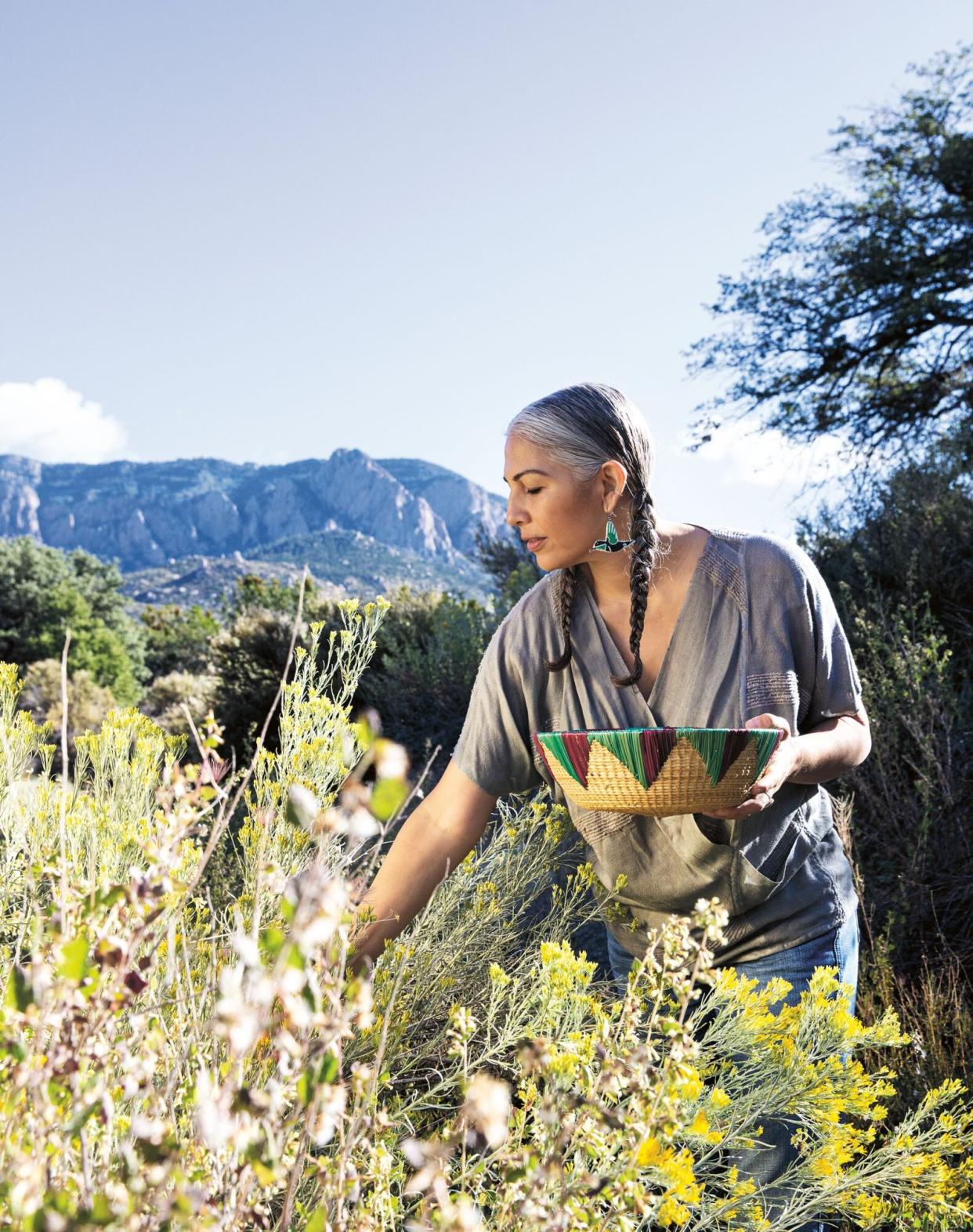Learn About the Healing Properties of Food with Indigenous Foods Activist and Healer Felicia Cocotzin Ruiz

Courtesy of Felicia Cocotzin Ruiz
Food as medicine may be a trendy (and relatively) new concept in the world of wellness, but for Felicia Cocotzin Ruiz, it's a way of life. She's a curandera (traditional healer), an indigenous foods activist, a natural foods chef, and the author of Earth Medicines: Ancestral Wisdom, Healing Recipes, and Wellness Rituals from a Curandera ($22.49, barnesandnoble.com). It took Ruiz 23 years to earn the title of curandera; she spent that time studying healing practices and natural medicine from a variety of different teachers. She was drawn to plants from a young age, and her great-grandmother taught her how to wildcraft. "She was my first plant teacher," Ruiz says. "She was well-known in her community in Old Town Albuquerque, New Mexico, as a curandera."
In her 20s, Ruiz started to learn more traditional ways of curanderismo. "I started learning bodywork, herbalism, and aromatherapy; working with sacred aromatics and plants," she says. "It's a lifelong journey of learning." Most of her teachers were indigenous grandmothers of the Southwest. "Our family was detribalized during the Spanish conquest in Northern New Mexico; I found home, teaching, and learning with teachers who were willing to share with me," Ruiz explains. "They weren't from my tribe, but we had similar plants and healing ways."
Related: 12 Anti-Inflammatory Foods Everyone Should Be Eating or Drinking
Ruiz's book, Earth Medicines, is a culmination of 25 years of training, and includes wellness recipes and rituals. It's separated into four main sections (Water, Air, Earth, Fire) and features nourishing recipes for eating and drinking, beauty recipes, and instructions for spiritual work in each section. "With Earth Medicines, I want everyone to learn how to become their own healer," Ruiz says. "If we can create harmony within ourselves as a collective, whether it's our family, our community, the greater country, and even the world, we will all begin to come back to inner harmony."
One of the recipes in the book that Ruiz is most excited about is Frijoles de la Olla, pinto beans cooked in a Mexican clay pot with onion, garlic, and epazote leaves. Ruiz owned a restaurant called Lola in Phoenix for five years before the Great Recession hit. The menu was plant-forward, with nourishing, nutrient-dense dishes. "One thing that people always said about my restaurant was that the flavors of the food were very simple," she says. When it came to curating recipes for Earth Medicines, she wanted to include simple recipes that make people think of home. Being from the Southwest with Mexican lineage, beans were a natural choice. "Beans are such a source of comfort," she explains. "The recipe is simple, but it's about connecting to the element of earth and how all of our cultures cooked in clay." The end result feels and tastes like home.
For Ruiz, the release of Earth Medicines is an important step in increasing awareness of indigenous foods as well as increasing Native American representation in the wellness space. "After I had to close my restaurant during the recession, I took a look around," Ruiz says. "Healing, food as medicine; these concepts weren't new to me. What was hard for me to see was that there were no Native American or very few brown people talking about our own foods. It seemed like no one knew what native foods were at this time; we didn't have Native American restaurants or indigenous restaurants, and I never saw an indigenous person on TV with a cooking show or people in magazines talking about our foods. It was always other people talking about our food." Since then, there's been a gradual shift, with indigenous chefs opening up restaurants around the country: Owamni by The Sioux Chef in Minneapolis, Wahpepah's Kitchen in Oakland, and Tocabe in Denver, to name a few. "We're starting to represent our own food," Ruiz says. "Even with this book, it's about having a platform to share that we have foodways, too."

